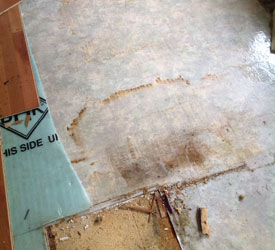Preventing Water Damage in the Bathroom
Preventing Water Damage in the Bathroom
Blog Article
What are your ideas on Preventing Water Damage in the Bathroom?

The bathroom is extremely vulnerable for moist accumulation and also possible water damages as a result of the constant use water in it. This post provides easy evaluation methods to aid identifying water damages threats.
The constant use water in the washroom makes it exceptionally at risk for wet buildup and also prospective water damages. By checking it routinely, you can decrease water related problems.
The adhering to collection of assessments is simple to carry out as well as ought to be done once in every 3 months in order to maintain your shower room healthy as well as to avoid potential water damages brought on by the bath tub, the shower, pipeline joints as well as plumbing, sinks, cabinets, and the commode
Do not disregard doing these evaluations and be thorough while executing them. Bear in mind that these easy inspections can conserve you a great deal of money by providing very early signs for water damages
Sinks as well as Cabinets
Sinks and closets are revealed to wetness and moisture everyday and are usually ignored. Examine regularly under the sink and also on the counter top above it. Fix any type of drip in the catch as it might recommend drain troubles. Take a look around the sink, slow draining pipes might suggest an obstructed drain. Change sink seals if they are broken or loosened.
Bathtub and also Shower
The shower and bath tub require unique attention as well as upkeep. Check the floor tiles and change if cracked. Ensure that there is no missing out on grout in between the tiles. Examine and also replace split caulking at joints where the walls satisfy the flooring or the bathtub. Blocked drains pipes and pipes troubles will stop the bath tub from drying as well as might indicate severe troubles beneath the tub. Seek advice from a professional right away to stop structural damage. Focus on stainings or soft locations around the bathtub walls as they might show an internal leak.
Plumbing
Signs for water damage are tough to identify since most pipes are set up inside the wall surfaces.
Pay unique attention to flooring as well as wall surfaces dampness and stains as they may suggest an unseen plumbing trouble. Check moisture levels in adjacent areas as well.
The Bathroom
The commode is an at risk water joint. Check the water lines and search for leaks around the bathroom seat, in the pipe, as well as under the water container. If you identify any signs of moisture on the flooring around the commode, look for leakages in the toilet edge and also tank seals.
Be aware that hanging toilet bowl deodorants increases the chances for clogs.
Water Damage Signs In The Bathroom To Avoid Cleanup
Musty smell
This is one of the easiest signs to catch because musty smells are so odorous. The damp, earthy, moldy smell should be a big red flag. The smell will develop when moisture gets trapped in surfaces, and begins to facilitate mold growth. Leaking pipes under cabinets, inside walls, and behind shower fixtures will cause moisture to stay trapped and not dry, which will lead to mold growth and spread. As soon as you notice any musty smells in your bathroom, have it checked for hidden water damage and cleanup signs.
Visible mold
If the smell isn’t there to give it away, sometimes you will actually see mold growth. Finding mold in your bathroom is a serious problem, because mold is very harmful to your health. By the time mold growth is visible, it also means that water damage has already occurred and been present for some time. The only way the mold problem can be resolved is to find the source of the moisture and get it stopped. To safely and adequately remove mold, you need to have professionals handle the remediation. Do not waste any time in getting mold problems addressed, fixed, and sanitized so that you can protect you and your family from the many respiratory symptoms caused by mold exposure.
Damaged floors
Bathroom floors should be able to withstand some exposure to water while still remaining in good condition. However, when excess exposure or water leaks occur, they will begin to damage even the most water-resistant flooring. If you notice any cracking, bubbling, staining, or warping on your bathroom floors, there is probably a water leak somewhere causing the distortion. If you notice areas of the floor have become softer, or even have a spongy feeling, there is probably damage to the subfloor. Subflooring is typically made up of plywood. When plywood is exposed to water or moisture, it will absorb it. Once it has become saturated, the weight of the excess water will cause the wood to swell and soften. Check the floors in your bathroom frequently to catch any of these sings before they lead to damaged subflooring.
Changes on walls
When water leaks behind walls, it will cause changes in the drywall. Peeling plaster, blistering paint, and soggy wallpaper are all good indicators that excess water is building up behind the wall. Water leaking behind drywall will cause it to swell and be soft to the tough. If you start to notice gaps along the trim of your walls, or where tile meets the wall, it could also be a strong indicator that there is a leak behind the wall. Any changes, distortion, or damage on the walls should be evaluated as soon as you notice it to prevent further water damage and cleanup.

I have been very intrigued by How to Prevent Bathroom Water Damage and I hope you appreciated my blog post. Are you aware of somebody else who is in to the topic? Be sure promote it. Thanks a lot for taking the time to read it.
Get A Free Quote Report this page